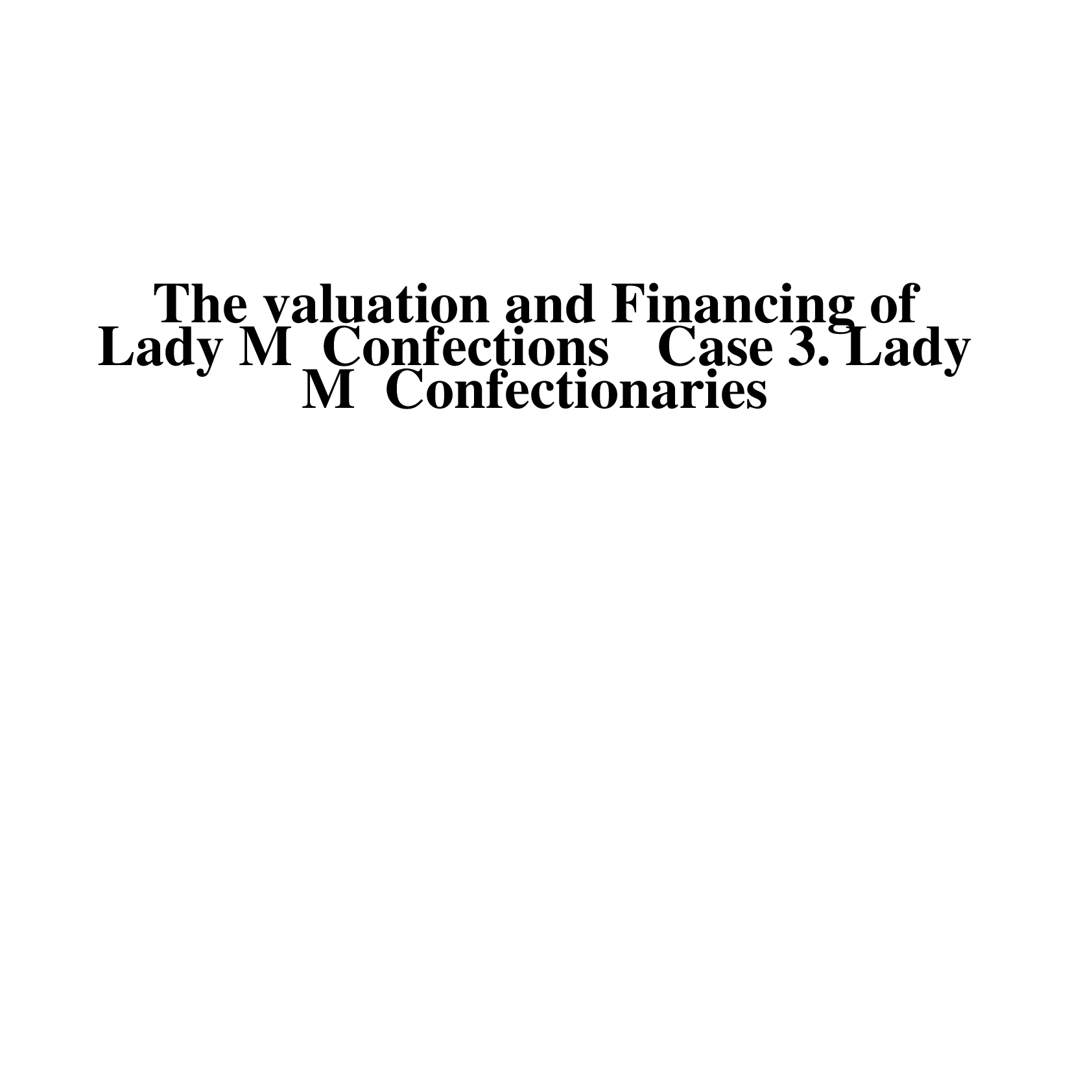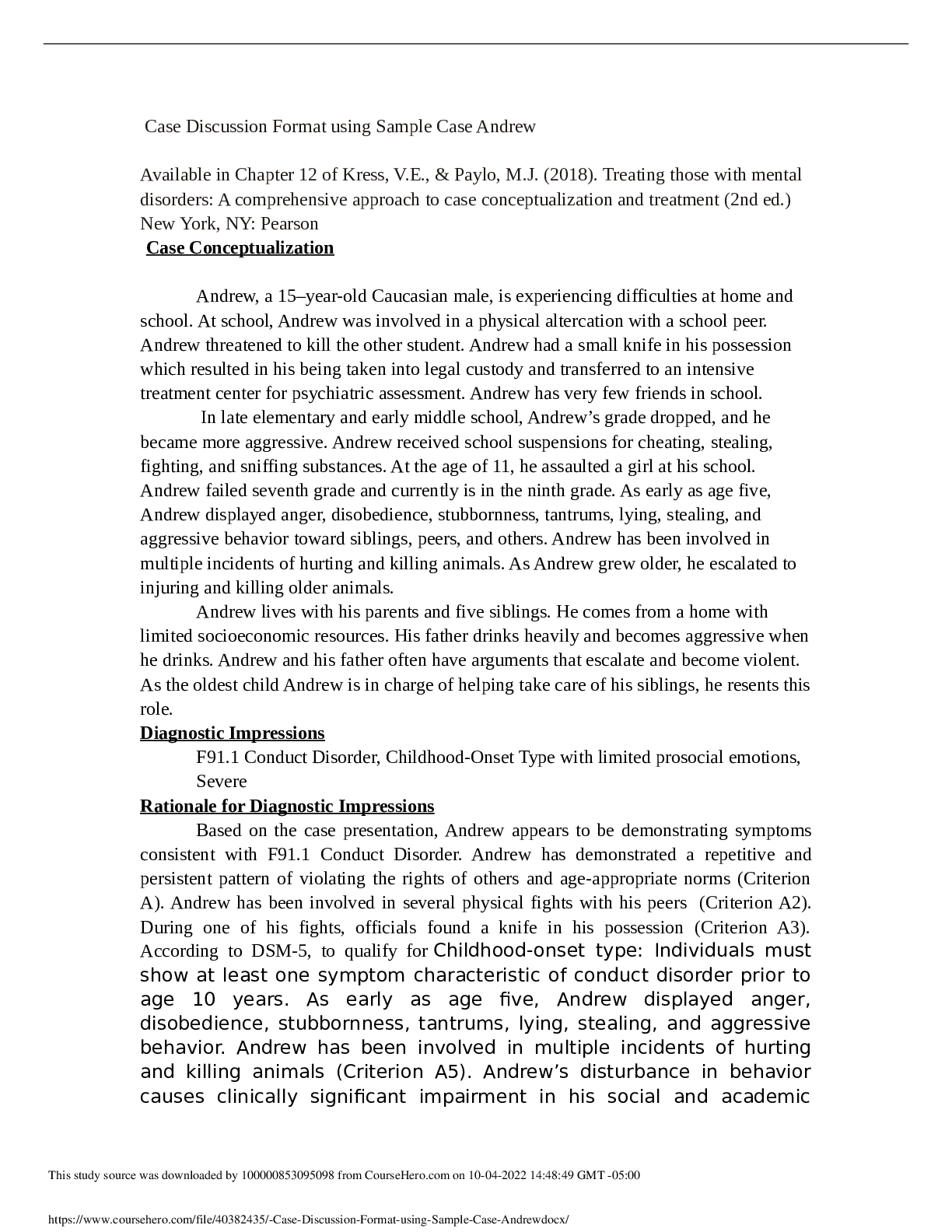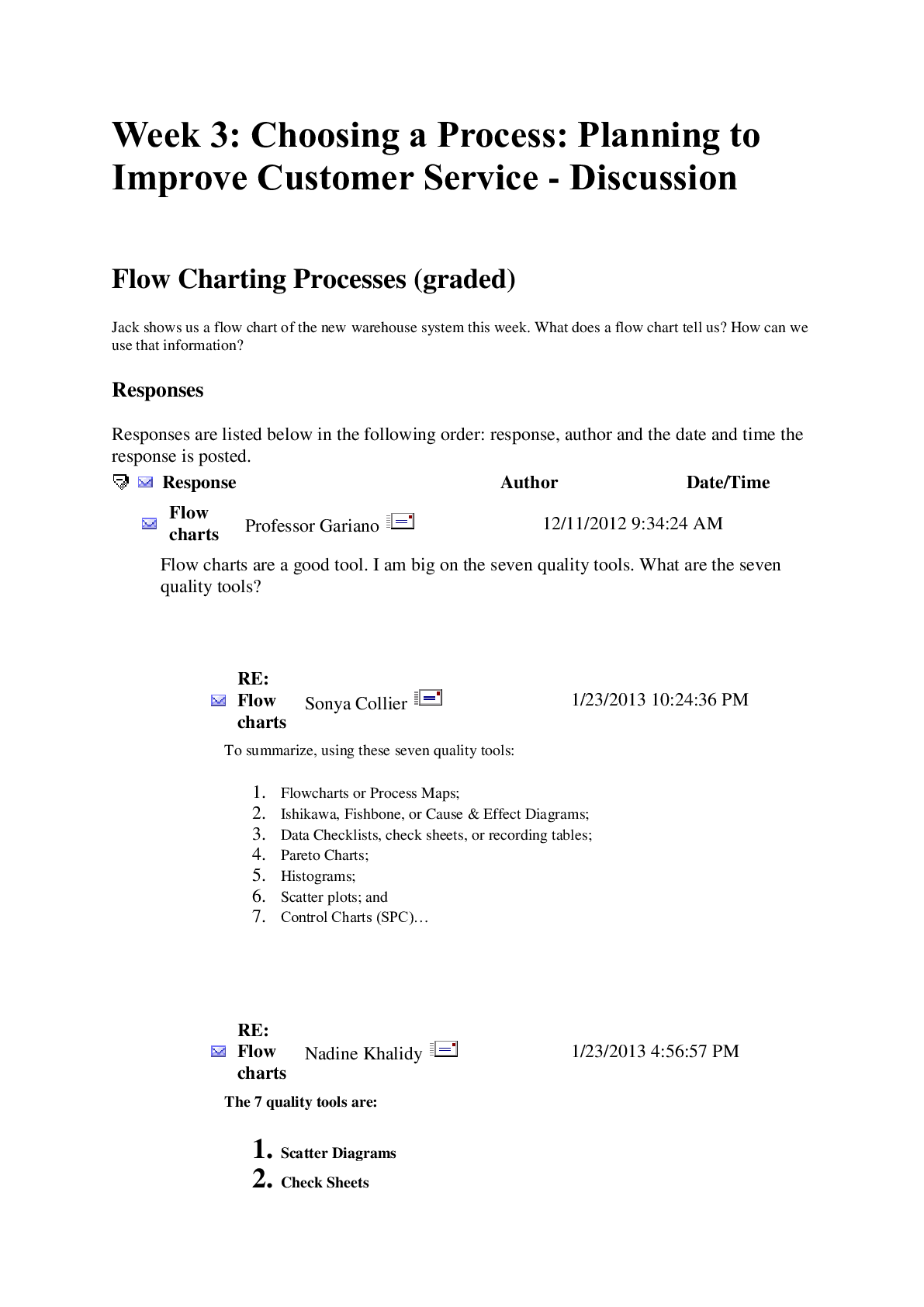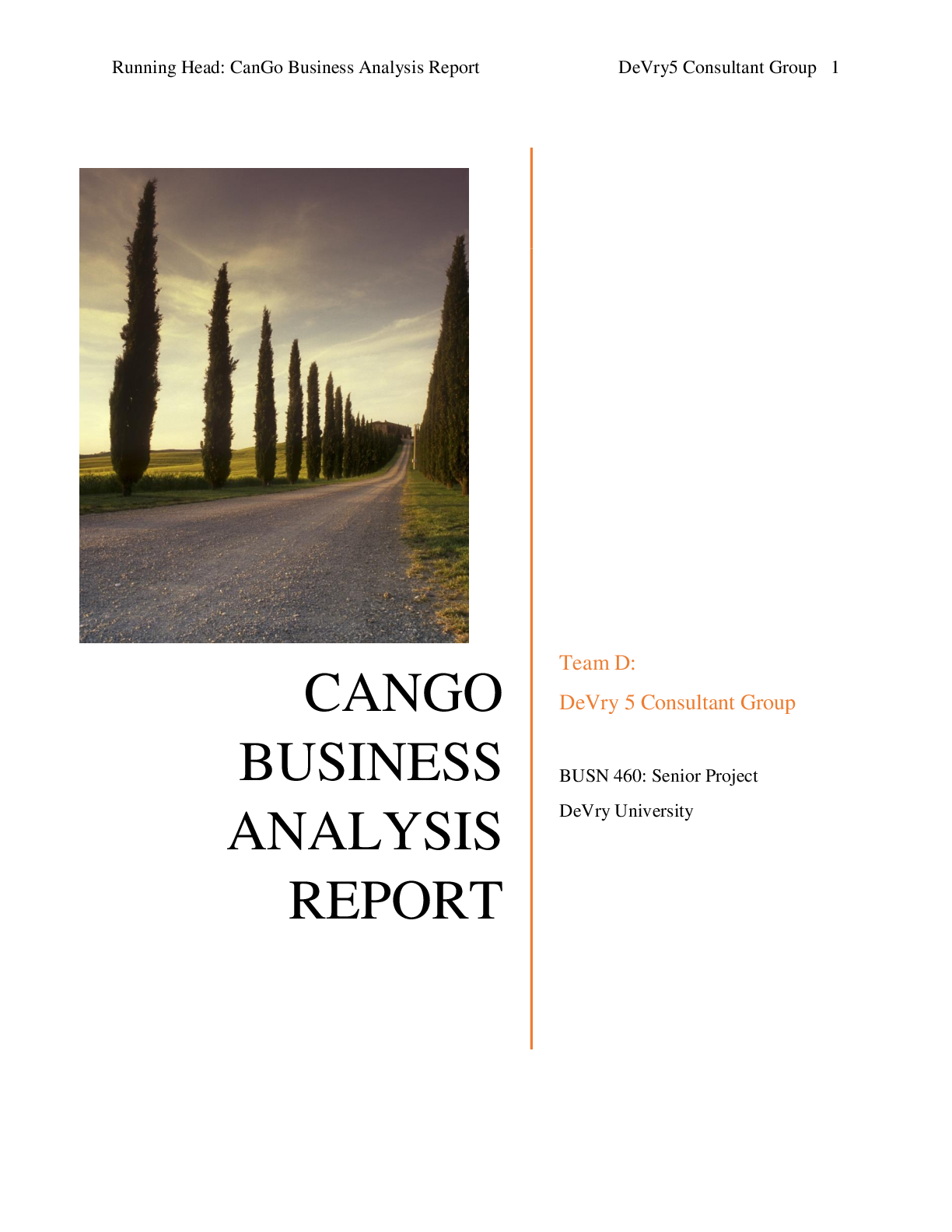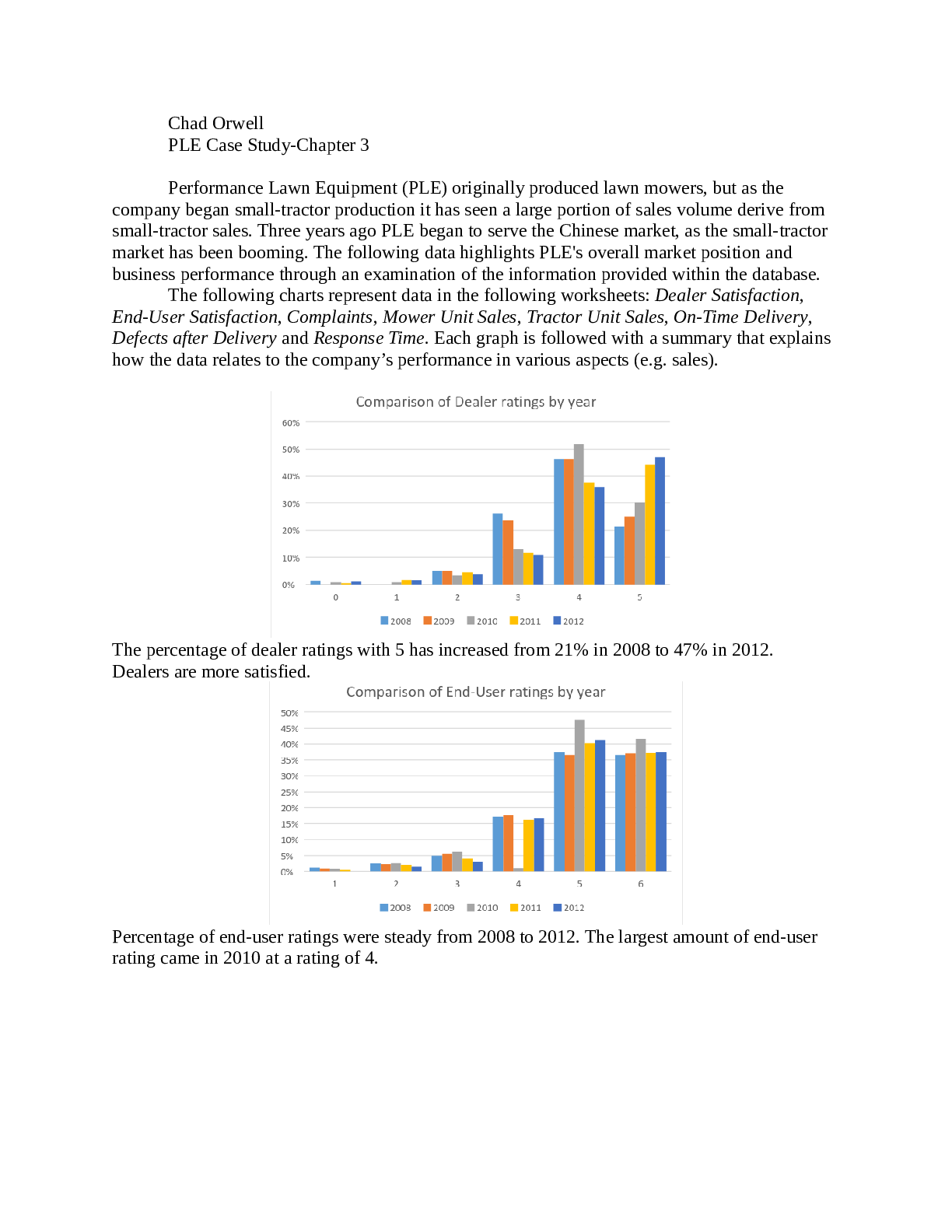Economics > CASE STUDY > The Haier Case Study Potential Controlling issue. For Distiction (All)
The Haier Case Study Potential Controlling issue. For Distiction
Document Content and Description Below
1. Introduction and Problem Identification The purpose of this report is to address the potential controlling issue facing the Haier Group, as it may be a vital component in the company’s future s... uccesses. The Haier Group is a household appliance and electronics company and is one of the most valued brands in China (Lin, 2014). Amongst a companies many achievements and successes, they are still susceptible to potential problems. According to Ilias, Abdulatiff and Mohamed (2016), for companies to succeed and excel in performance, it is essential to incorporate management control systems within a business. These systems are used to measure and assess performance allowing corrective action to take place; ensuring desired goals are achieved (Illias et al., 2016). In this particular case the Haier Group implemented the OEC management control system, which required employees to complete the mandatory work with a 1% increase over what was done the previous day (Lin, 2014). This implementation was designed to monitor the work performance of individuals as a means of feedback control. This may however cause more harm than originally thought, as the extent to which control may hinder performance should be considered in regards to this case study (Wijethilake, Munir, & Appuhami, 2016). With the unsustainable goal of increasing productivity everyday and as well as penalties for incompliance, synergy is problematic. When employees fear their own failure they are more likely to work individually rather than as a cohesive team. Levecque, Roose, Vanroelen, & Rossem (2014) states that employees with a negative perception of the affective climate of their team may experience higher levels of psychological stress in the workplace. Therefore, in Haier’s case creating this highly competitive atmosphere with unobtainable goals, may amplify stress in employees. This could inturn lead to higher turnover or devious and unethical behaviour if not resolved (Chovwen, Olowokere & Balogun, 2014). This report will firstly discuss contemporary literature on management controls such as feedback and bureaucratic control. They will then be contrasted and examined in light of the Haier case. Finally, this report will provide a solution utilising bureaucratic control. 1. Introduction and Problem Identification 2 2. Discussion 3 2.1 Feedback Control 3 2.2 Bureaucratic Control 4 3. Conclusion 6 4. Recommendations 7 5. References: Firstly levels of authority must be established consisting of a few high-ranking managers who must determine organisational goals that are clear, realistic, challenging and obtainable. They are then assigned responsibility to control and monitor employees and their performance. This can be achieved by defining rules that set guidelines for behaviour as well as methods for executing work tasks through clear policies and procedures that are enforced strongly through authority. Employees will also be recognised and rewarded relative to organisational goals and standards, not favouritism or luck. Authority figures are then required to patrol and supervise daily activities providing guidance and support for employees. This implementation will allow employees access to strict instructions to ensure production follows managerial procedures, decreasing chances of devious behaviour and induced stress due to inability to complete tasks correctly.xxxxxxx sxxxxxxx xxxxxxx 8 5. References: Ahmad, Z., & Norhashim, M. (2008). The control environment, employee fraud and counterproductive workplace behaviour: An empirical analysis. Communications of the IBIMA, 3, 145-155. Chovwen, C. O., Olowokere, B. O., & Balogun, S. K. (2014). Determinants of job hopping experience among private and public sector employees' turnover intention. IFE Psychologia: An International Journal, 22(2), 114-124. Ebrahimi, M., & Sadeghi, M. (2013). Quality management and performance: An annotated review. International Journal of Production Research, 51(18), 5625-5643. doi:10.1080/00207543.2013.793426 Grabner, I., & Speckbacher, G. (2016). The cost of creativity: A control perspective. Accounting, Organizations and Society, 48, 31-42. Hoggett, P. (1996). New modes of control in the public service. Public Administration, 74(1), 9-32. doi:10.1111/j.1467-9299.1996.tb00855.x Ilias, N., Abdulatiff, N. K., & Mohamed, N. (2016). Management control system and performance: Accountability attributes in local authorities. International Journal of Economics and Financial Issues, 6(4), 26-35. Kreitner, R. (1982). The feedforward and feedback control of job performance through organizational behavior management (OBM). Journal of Organizational Behavior Management, 3(3), 3-20. doi:10.1300/J075v03n03_02 Lechler, T. G., & Cohen, M. (2009). Exploring the role of steering committees in realizing value from project management. Project management journal, 40(1), 42-54. Levecque, K., Roose, H., Vanroelen, C., & Rossem, R. V. (2014). Affective team climate: A multi-level analysis of psychosocial working conditions and psychological distress in team workers. Acta Sociologica, 57(2), 153-166. doi:10.1177/0001699313498262 Lin, T. W. (2005). OEC management-control system helps china haier group achieve competitive advantage. Management Accounting Quarterly, 6(3). Shiraz, N., Rashid, M., & Riaz, A. (2011). The impact of reward and recognition programs on employee's motivation and satisfaction. Interdisciplinary Journal of Contemporary Research in Business, 3(3), 1428. Tat Wai Yu, B., & Wai Ming, T. (2008). Effects of control mechanisms on positive organizational change. Journal of Organizational Change Management, 21(3), 385-404.xxxxxxx sxxxxxxx xxxxxxx 9 Wijethilake, C., Munir, R., & Appuhami, R. (2016). Environmental innovation strategy and organizational performance: Enabling and controlling uses of management control systems. Journal of Business Ethics, 1-22. doi:10.1007/s10551-016-3259-7 Wynder, M. (2007). The interaction between domain-relevant knowledge and control system design on creativity. Australian Journal of Management, 32(1), 135- 152. [Show More]
Last updated: 1 year ago
Preview 1 out of 10 pages
Instant download
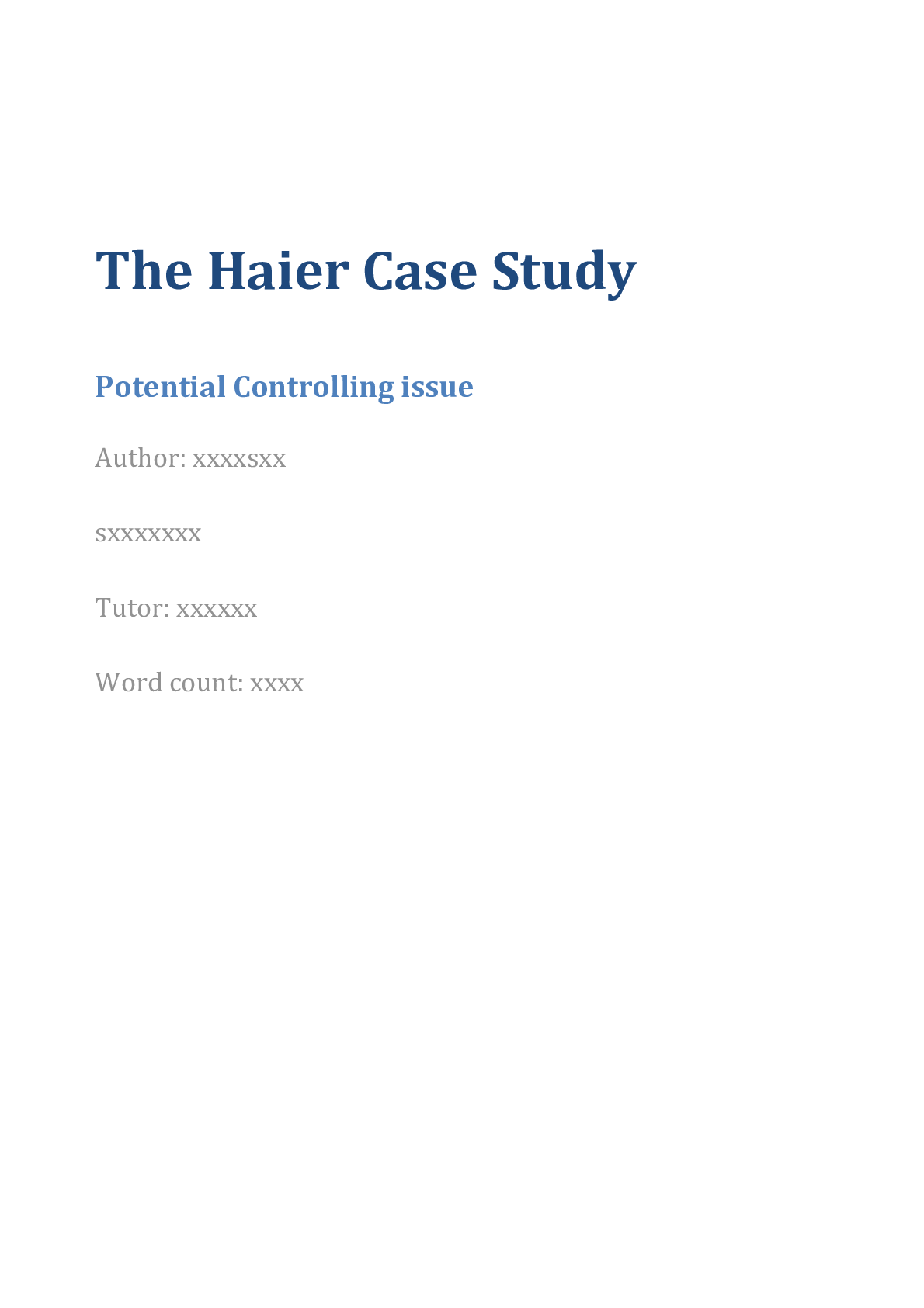
Buy this document to get the full access instantly
Instant Download Access after purchase
Add to cartInstant download
Reviews( 0 )
Document information
Connected school, study & course
About the document
Uploaded On
Jan 02, 2020
Number of pages
10
Written in
Additional information
This document has been written for:
Uploaded
Jan 02, 2020
Downloads
0
Views
96

